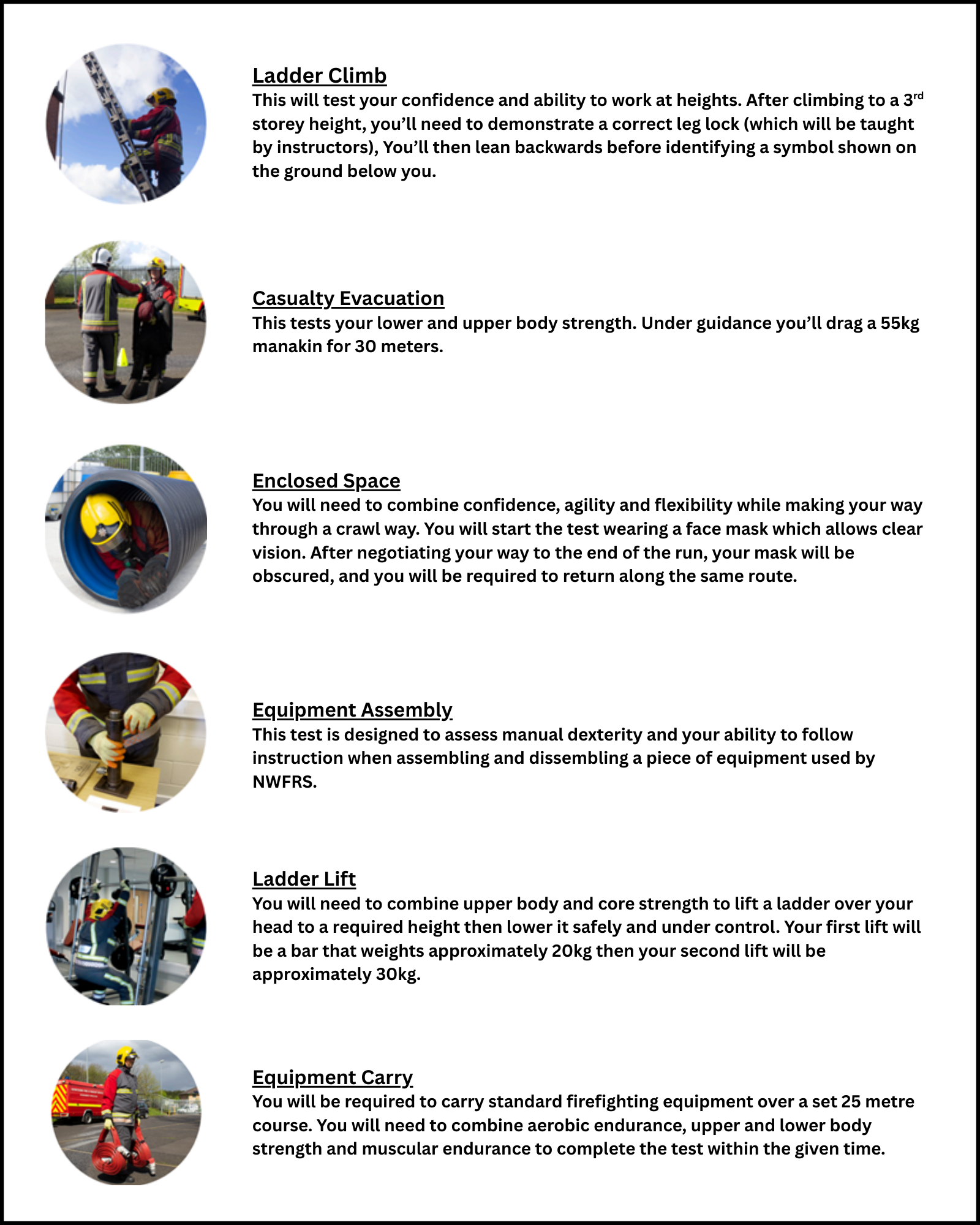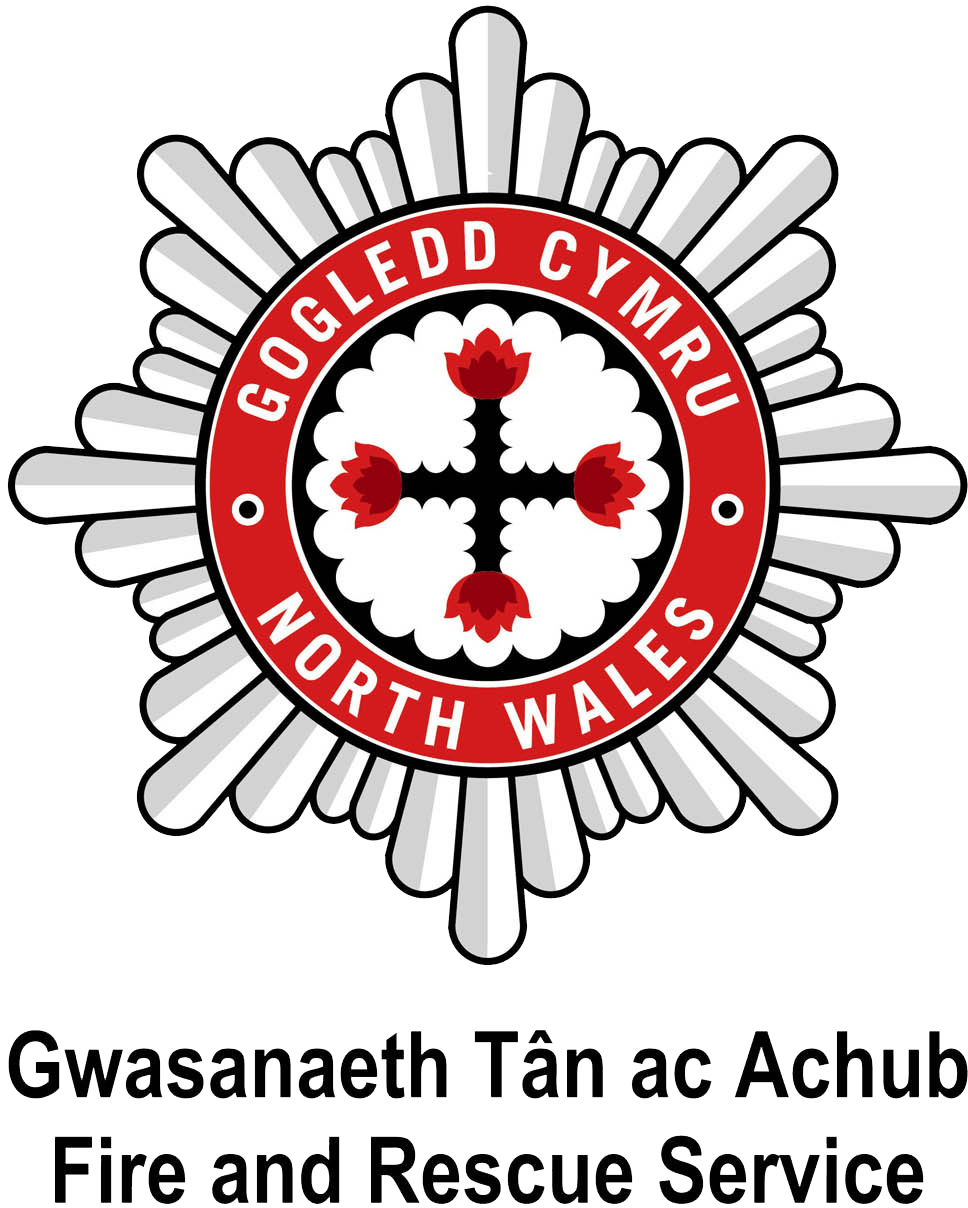Fitness
Fitness
What is Physical Fitness?
Physical fitness is a state of health and wellbeing. It is considered a measure of the body’s ability to function efficiently and effectively in a range of situations.
Why is it important for firefighting?
Firefighting involves responding to emergencies in rapidly changing situations, environments and weather conditions. The role of a firefighter often requires carrying and rolling out hose, climbing stairs, lifting ladders and using ropes to manoeuvre equipment whilst wearing full PPE which can be restrictive and very warm. Some of the equipment can also weigh upwards of 120kg so a good level of physical fitness is essential to ensure yours, your crew and the public’s safety whilst carrying out your duties.
Physical fitness is not a skill. It’s not something that can learned and retained for an extended time. In order to improve the components of fitness, engaging in regular physical exercise throughout your career is fundamental.
Your level of physical fitness will be determined by measuring your performance during a number of physical and practical firefighting tasks (National Firefighter Selection Tests NFST) which are detailed below.
If successful at the physical selection day you will also be required to perform an ‘aerobic’ fitness test to predict your aerobic capacity (in mlsO2/kg/min). This allows us to assess your ability to perform exercise for longer periods which is important for safe firefighting. The minimum requirement for candidates at recruitment is 42.3 mls/O2/kg/min (equivalent to level 8.8 on a bleep test). This will be assessed using either of the following:
Learn more about Firefighter fitness below:
1. Selection Day and Physical Requirement
During the physical selection day, you will be required to undertake a series of tests that are designed to test your physical fitness, your ability to work as part of a team and your reaction to environments which are commonplace in the role of a firefighter.
Don’t worry if you haven’t done these kinds of tests before. You will be given clear guidance and instruction on how to use the equipment involved, as well as a demonstration of each individual test. You will be required to wear firefighter Personal Protective Equipment to undertake the following National Firefighter Selection Tests (NFST).

A video of all tests can be viewed here.
Individual videos demonstrating the ladder lift and the equipment carry tests can be viewed by clicking the links below:
2. Annual Health and Fitness Review
Throughout your career as a firefighter, it is your responsibility to maintain the levels of physical and medical fitness to carry out your duties. To ensure these health and fitness standards are maintained throughout your career, it is service policy for our firefighters to undergo an annual health and fitness review.
As part of the health and fitness review, each employee is required to undergo a series of physical (pre-screening) measurements to determine their health and fitness status and suitability for operational duties. These are:
- Body composition: e.g. Body Mass Index (BMI), Body Fat %
- Resting blood pressure
- Pre-screening health assessment
- A suitable cardi-respiratory fitness review (Chester Treadmill or Chester Step Test)
In addition to the Annual Health & Fitness Review, you will also be required to undergo a periodic medical assessment every 3 years with our occupational health providers.
3. Further Guidance

